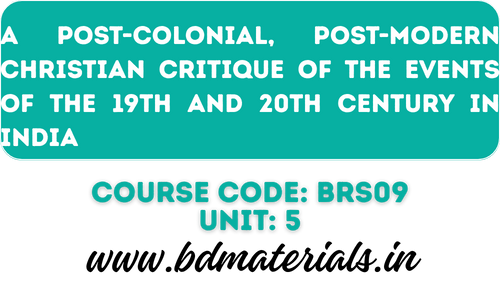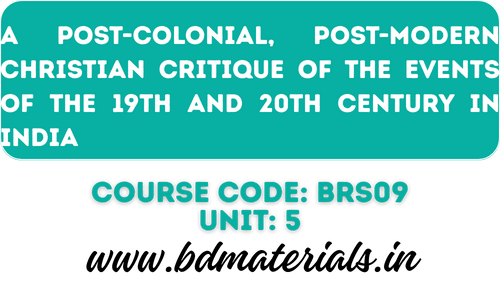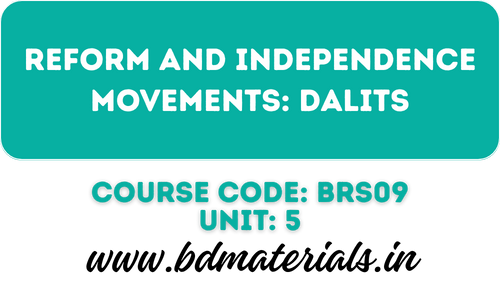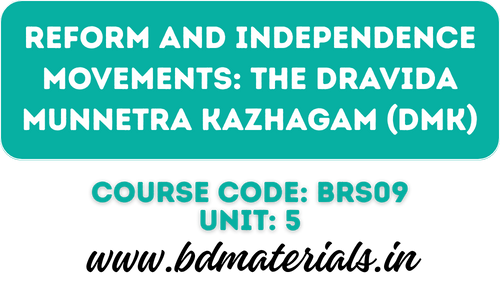Bhakti Vedanta Prabhupada – ISKCON
Bhaktivedanta Prabhupada (1896-1977): According to tradition, over five hundred years ago, Lord Sri Krishna appeared as Sri Chaitanya Mahaprabhu in Navadvipa, a village in West Bengal. The purpose of His appearance was to inaugurate the Sankirtana Movement, the Yuga Dharma for this age of Kali. He declared that the chanting of His holy names would spread beyond the shores of India to every town and village in the world. He predicted that His commander-in-chief would appear to accomplish this mission. Prabhupada appeared to fulfill this prophecy.
Early life and education
Born on 1 September 1896, the day after Janmastami ,one of the most important Vaishnava holidays, in a humble house in the Tollygunge suburb of Calcutta in a Bengali Suvarna Banik family, he was named Abhay Charan, ―one who is fearless, having taken shelter at Lord Krishna’s feet. Since he was born on the day of Nandotsava (a traditional festival in honour of Krishna‘s birth) he was also called Nandulal. His parents, Sriman Gour Mohan De and Srimati Rajani De, were devout Vaishnavas (devotees of Vishnu). In accordance with Bengali tradition, his mother had gone to the home of her parents for the delivery, and only a few days later Abhay returned with parents to his home at 151 Harrison Road in Calcutta, where he was brought up and educated. It is also said that, an astrologer prepared the horoscope for the baby and revealed: When this child reaches the age of seventy, he will cross the ocean, become a great teacher of religion and establish 108 Krishna temples.
He received a European-style education in the Scottish Church College, which was well reputed among Bengalis; many well-to- do Vaishnava families sent their sons there. The professors, most of whom were Europeans, were known as sober, moral men, and it is believed that the students received a good education. The college was located in north Calcutta, near the De‘s family home on Harrison Road. During his years in the college, Abhay Charan De was a member of the English Society as well as that of the Sanskrit Society, and it has been suggested that his education provided him a foundation for his future leadership. He graduated in 1920 with majors in English, philosophy and economics. He rejected his diploma in response to Gandhi’s independence movement.
At 22 years of age he married Radharani Devi, who was then 11 years old, in a marriage arranged by their parents. At 14, she gave birth to Abhay’s first son.
Religious Journey
In 1922, when he first met his spiritual master, Bhaktisiddhanta Sarasvati Thakura, he was requested to spread the message of Chaitanya Mahaprabhu in the English language. In 1933 he became a formally initiated disciple of Bhaktisiddhanta. In 1944, he started the publication called Back to Godhead, for which he acted as writer, designer, publisher, editor, copy editor and distributor. He personally designed the logo, with the motto: ―Godhead is Light, Nescience is darkness”.
In 1947, the Gaudiya Vaishnava Society recognised his scholarship with the title Bhaktivedanta, (bhakti-vedānta) meaning ―one who has realised that devotional service to the Supreme Lord is the end of all knowledge (with the words Bhakti, indicating devotion and Vedanta indicating conclusive knowledge).
His later well-known name, Prabhupada, is a Sanskrit title, literally meaning ―he who has taken the shelter of the lotus feet of the Lord where prabhu denotes ―Lord, and pada means ―taking shelter. Also, ―at whose feet masters sit. This name was used as a respectful form of address by his disciples from late 1967 early 1968 onwards.
From 1950 onwards, he lived at the medieval Radha-Damodar mandir in the holy town of Vrindavan, where he began his commentary and translation work of the Bhagavata Purana. He single-handedly published the first three volumes covering seventeen chapters of the first book of Bhagavata Purana, filling three volumes of four hundred pages, each with a detailed commentary.
Mission to the West
He then left India for the United States of America in 1965, obtaining free passage on a freighter called the Jaladuta, with the aim and a hope of fulfilling his spiritual master‘s instruction to spread the message of Caitanya Mahaprabhu around the world. In his possession were a suitcase, an umbrella, a supply of dry cereal, about eight dollars worth of Indian currency, and several boxes of his books. His journey was neither sponsored by any religious organization, nor was he welcomed by any group of devotees.
It was in July 1966 that he brought ―global missionary Vaishnavism to the Western world, founding the International Society for Krishna Consciousness (ISKCON) in New York City. He spent much of the last decade of his life setting up the institution. Since he was the Society’s leader, his personality and management were responsible for much of ISKCON‘s growth and the reach of his mission.
When it was suggested to him at the time of founding the ISKCON in 1966 that a broader term ―God Consciousness would be preferable to ―Krishna Consciousness in the title, he rejected this recommendation, suggesting that the name Krishna includes all other forms and concepts of God.
Prabhupada arrived in the US during the decade of discontent; there was widespread dissatisfaction with America‘s war with Vietnam. The American youth created their counterculture popularly known as hippie culture. They were trying to break away from the status quo, searching for an alternative. Prabhupada presented this alternative.
Prabhupada brought the Hare Krishna Movement to the public eye by:
- chanting in the parks,
- distributing the Back to Godhead Magazine,
- conducting love feasts,
- Delivering lectures from the Bhagavad-gita and Srimad Bhagavatam in a rented storefront.
Thus, he attracted many youngsters, who gradually became his disciples. In New York, he faced great hardships and began his mission humbly by giving classes on the Bhagavad-gita in lofts on the Bowery and leading kirtan (traditional devotional chants) in Tompkins Square Park. His message of peace and goodwill resonated with many young people, some of whom came forward to become serious students of the Krishna-bhakti tradition. With the help of these students, Bhaktivedanta Swami rented a small storefront on New York‘s Lower East Side to use as a temple. Srila Prabhupada trained his disciples in the tradition of Deity Worship, to help them advance spiritually. Once ISKCON was more established in there, a small number of devotees from the San Francisco temple were sent to London, England where they came into contact with The Beatles. George Harrison took the greatest interest, spending a significant time speaking with him and producing a record with members of the later London Radha Krsna Temple.
To revive the Krishna conscious tradition, he envisioned God-centered self-sufficient farm communities based on the principles of Simple Living, High Thinking. In 1972, he started a gurukul in Dallas, Texas – an educational institution set up according to the traditional Vedic model. He established more than 108 temples and instructed his disciples that no one should go hungry within a 10 mile radius of an ISKCON temple.
Over the following years his continuing leadership role took him around the world some several times setting up temples and communities on other continents. By the time of his death in Vrindavan in 1977, ISKCON had become an internationally known expression of Vaishnavism. With the desire to nourish the roots of Krishna consciousness in its home, Srila Prabhupada returned to India several times, where he sparked a revival in the Vaishnava tradition. In India, he opened dozens of temples, including large centers in the holy towns of Vrindavana and Mayapura.
Within 12 years from his arrival in New York until his final days, some of his achievements were:
- Circling the globe 14 times on lecture tours.
- Founded the Bhaktivedanta Book Trust, which claims to be the largest publisher of ancient and classical Vaishnava religious texts.
- Founded the religious colony New Vrindavan in West Virginia.
- Authored more than 80 books on Vedantic philosophy, religion, literature and culture.
Prabhupada and His Books
Of all his contributions, Srila Prabhupada considered his books to be of utmost importance. These books present the timeless wisdom of Vedic scriptures in modern English with startling clarity and a convincing, simple eloquence that proves the relevance of the science of self-realization to our modern world and our own lives. These books have changed the lives of millions.
The transcendental knowledge in his books forms the basis of the Hare Krishna Movement. Srila Prabhupada encouraged the devotees to distribute this literature profusely. These books are translated in most of the major languages and are widely distributed across the world. He authored over 70 volumes on the Krishna tradition, which are highly respected by scholars for their authority, depth, fidelity to the tradition, and clarity. Several of his works are used as textbooks in numerous college courses. His writings have been translated into 76 languages. His most prominent works include: Bhagavad-gita As It Is, the 30-volume Srimad-Bhagavatam, and the 17- volume Sri Caitanya-caritamrita. In February 2014, ISKCON‘s news agency reported to have reached a milestone of distributing over half a billion books authored by Bhaktivedanta Swami Prabhupada, since 1965.
His teachings on other religions
Bhaktivedanta Swami considered Moses, Jesus, and Mohamed to be empowered representatives of God, describing them within his writings as pioneers of the same essential message of dedication to God with love and devotion. According to Prabhupada, ―Actually, it doesn’t matter – Krishna or Christ – the name is the same. The main point is to follow the injunctions of the Vedic scriptures that recommend chanting the name of God in this age. Other typical expressions present a different perspective, where he would point out that ―today I may be a Hindu, but tomorrow I may become a Christian or Muslim. In this way faiths can be changed, but dharma‖ is a natural sequence, a natural occupation or a connection and it cannot be changed, because it is permanent, according to him. While the ISKCON theology of personal god is close to Christian theology, both personal and monotheistic, being a preacher of bhakti and a missionary he sometimes would add, that ―already many Christians have tasted the nectar of divine love of the holy name and are dancing with karatalas (hand-cymbals) and mridangas (drums). According to Prabhupada, Krishna Consciousness is not an arm-chair philosophy or a part-time religion; it is a way of life.
Criticism
Many of Prabhupada’s teachings have garnered significant public controversy. Most notably his teachings concerning the Indo-Aryan peoples of ancient India, which critics claim is drawn along racial lines, has acquired public condemnation. In a speech in Melbourne on April 21, 1976, Prabhupada praised the concept of ―the Aryan saying that it is ―the best form of human life and that the Aryans means ―those who are advanced. He also said that the Europeans and the Americans belonged to the Aryan family and that they have lost their Vedic culture, but now it is being revived again.
His racial comments have also drawn a lot of flak. During a morning walk in Hyderabad on April 20, 1974, he publicly commented that in Central Park it is impossible to have a peaceful walk because the Negroes they capture and rape the women. He also said that one‘s position can be changed through Krishna consciousness. But one cannot change the colour of one‘s skin; white remains white and black remain black.
Friendly Note
Bachelor of Divinity Materials is your go-to resource for comprehensive Biblical studies, supporting students in Bachelor of Divinity (B.D.) and other theological courses. Our platform offers access to the full syllabus, detailed answers, and a vast collection of assignments, study guides, articles, and research papers to help you excel academically.
We provide downloadable PDFs of study materials, including books and journals, for convenient learning anytime, anywhere. Whether preparing for exams or conducting research, our resources cater to both students and scholars in biblical studies.
Committed to empowering theological learners, we aim to deliver high-quality, authentic study materials. Explore Bachelor of Divinity Materials to deepen your understanding of God’s Word and Christian doctrine, making it a valuable resource for aspiring ministers and anyone dedicated to theology.






